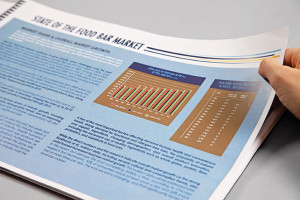Does Googling Count as Market Research?
Google vs Market Research

As a college student circa 2005, I was brash enough with my newfound power of knowledge that I told my mother that Googling “didn’t count as research.” A few years later my mom asked me, somewhat pointedly, if that were still true, and though I had to admit that Google had improved a lot as a source of research, it was still not to be confused with the enterprise of research or considered the end/goal of market research.
We have more sources of business information than ever before—not just Google, but databases of sales information, web analytics, and on and on—so it might seem that the need for market research is lower than ever. In fact, we find that the opposite is true. Although it may be tempting to treat professional research as a “nice to have” rather than a necessity in the age when any of your employees can use Google, we find that the most forward-looking brands have more need for truly actionable research.
Simply put, having information doesn’t equal an action plan. Businesses may have more information than ever, but knowing what to do with that intelligence is another matter. Google, business analytics, and other invaluable research tools give you raw data; interpreting that data and applying it to your situation requires a different set of skills.
How to Gather Market + Industry Data
On the research team at MarketPlace, we use a variety of sources to gather information, from Google to custom surveys to social media tracking. But our real value comes from our ability to synthesize, contextualize, and apply that data, and to present it in a way that makes it comprehensible as a source of action. It’s great to know, for example, that your industry has grown by 10 percent in the last year, but that data point itself is of little value if it doesn’t come accompanied by context, and if that information doesn’t suggest to you something to do.
Hundreds of industry trend pieces are published online every year—and we both produce and track them—so how do you choose which trends are most useful to you?
Actionable Insight for our Food, Pet, and Nutraceutical Industry Partners

Google and other digital tools may make it easier than ever to get information, ideas, and raw numbers. But it takes a different set of skills to transform those scattered pieces of data into an actionable piece of research. Doing that requires skills for taking things apart (bogus trend reports) and for putting them together (seemingly unrelated pieces of data). It requires a broad view of the industry and culture at large.
In short, making research meaningful is a specialized skill. Yes, it includes Google. We love Google. But knowing how to do market research—is a synthesis of knowing how to find information, how to understand it, and how to apply it to specific situations.
Often when our clients approach us for research, they find that they can learn—and gain—much more than they’d considered possible. Although many people are aware of market research on a broad level, as insight into consumer trends or sales figures, we offer a lot more than that.
Research-Based Insight MarketPlace Has Provided:
- Presented private equity firm Thompson Street Capital Partners with a detailed overview of the pet products market prior to acquisition of a contract manufacturer, including recommended sales targets drawn from internal sales data and industry growth figures
- Helped Bunge North America finalize the launch of their expeller-pressed and non-GMO brands with custom consumer research on perceptions of natural oils, as well as insight on key sales targets
- Developed recommendations for a startup looking to create a to-be-determined almond product, including recommendations on the most valuable potential business models in both B2B and B2C channels
- Delivered a feasibility report for a pet food startup, including a category management analysis for select retailers
- Developed an exhaustive report on opportunities in the bar market for a flavor company deciding whether to enter the market
- Performed original industry research, including media-focused surveys, to inform a transparency campaign initiative for a food ingredients partner
Beyond these specific examples, we’ve also done the following for our partners:
- Analyzed sales data to give recommendations on product portfolio shifts
- Assessed consumer perception of new label claims
- Estimated the market size for a new product or service based on competitive figures
Make Data-Supported Decisions for Your Brand
Each of these types of research requires both data and analysis, and accordingly each is more than mere numbers. Each has real implications for what clients do in their business. For our clients who work with us on projects like these, the insight has been invaluable in making decisions about product strategy, mergers and acquisitions, and the launch of new businesses. Even in the age of Google, big decisions need support from skilled research. If that starts to call some possibilities to mind, please get in touch, as we’d love to discuss how our research team can be part of your marketing and sales efforts.
Check out our work samples that include some of our market research.
